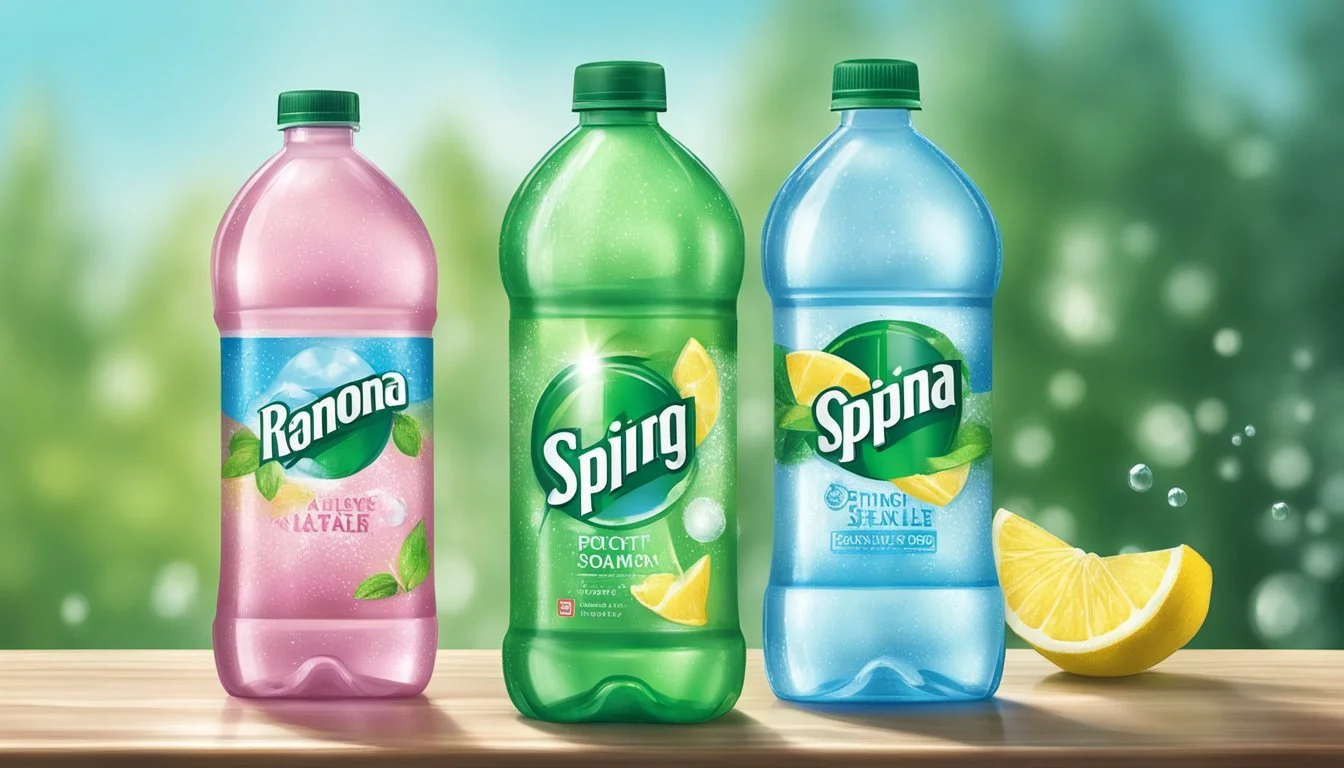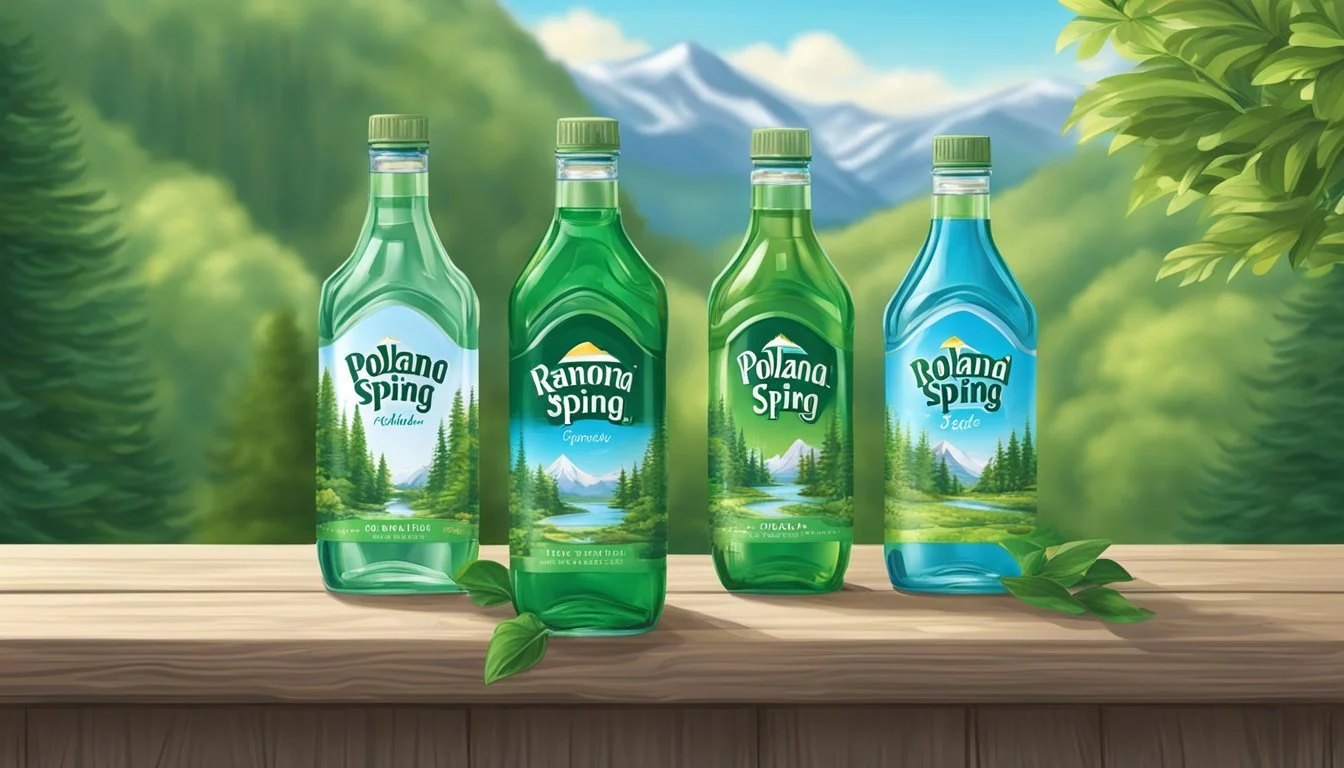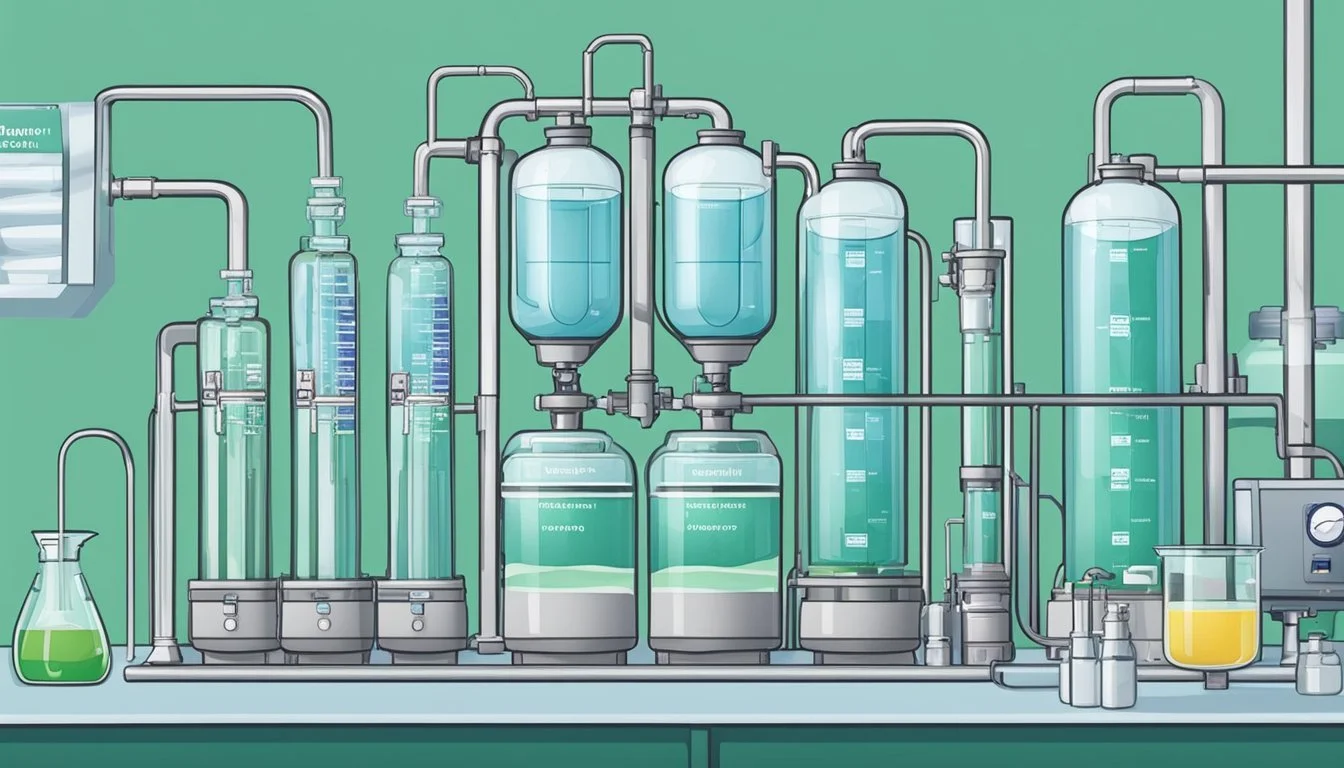Poland Spring vs. Ramona
Comparing Quality and Taste
Choosing the right bottled water can be a daunting task when faced with numerous options. Poland Spring and Ramona are both notable brands in the market, sparking debate among consumers who prioritize taste, source, and overall quality. Among the two, Ramona offers a distinct advantage with its fresher and crisper flavor profile.
Poland Spring draws from natural springs in Maine, giving it a mineral-rich taste that some enjoy but doesn’t quite match the refreshment level of higher-end brands. Ramona, sourced from pristine springs, boasts lower sodium content and a pure, clean taste that appeals to those with discerning palates. The choice between these two often boils down to personal preference.
While Poland Spring provides a reliable, budget-friendly option, those looking for an elevated water-drinking experience might find Ramona superior. The matter of which bottled water is better is driven by individual tastes and priorities, making it essential for consumers to weigh these factors before making a decision.
Background on Bottled Water
Bottled water has become a significant part of modern consumption, driven by both health concerns and lifestyle choices. The rise of bottled water has seen shifts in how people perceive and consume water compared to tap water.
The Emergence of Bottled Water
The history of bottled water dates back centuries, originally seen as a luxury item. In the 1700s, bottled water was marketed for its supposed health benefits. Brands like Mountain Valley Spring started early in the 1800s and established the foundation for the industry. By the late 20th century, bottled water gained popularity due to concerns over tap water quality and the convenience it offers.
Key milestones include:
1800s: Development of early brands like Poland Spring.
1970s-1980s: Surge due to health awareness and marketing.
2000s: Global expansion and increased competition.
Trends in Water Consumption
In recent years, bottled water consumption has significantly increased, surpassing soft drink sales in some regions. This shift is fueled by a focus on health and wellness, environmental concerns, and advancements in purification technologies. Consumers now demand transparency in sources and quality, leading to more detailed labeling and certification of bottled waters.
Current trends:
Health Consciousness: Preference for bottled water over sugary drinks.
Sustainability: Growth in demand for eco-friendly packaging.
Purity Certifications: Consumers seeking verified safe sources like spring and purified water.
These changes reflect a broader awareness and demand for quality hydration in convenient forms.
Comparing Poland Spring and Ramona
Poland Spring and Ramona offer unique qualities that set them apart in the bottled water market. This comparison covers their history, bottling processes, and environmental footprint to help determine which is better.
History and Origin
Poland Spring originates from multiple natural springs in Maine, including the famous Poland Spring in Poland, Maine. Founded in 1845, the brand has a long history of sourcing water from natural springs. It emphasizes its local roots and American heritage.
Ramona, on the other hand, has a more recent origin. Established in the late 20th century, it focuses on sourcing its water from various natural springs across the U.S. This newer brand aims to offer a fresh and modern approach to bottled water while maintaining a high quality.
Bottling Process
Poland Spring uses a multi-step filtration process to ensure the purity of its water. The water is filtered through a series of natural layers and additional treatments to remove impurities while preserving natural minerals. This results in a crisp taste. Bottled at the source in Maine, every bottle aims to capture the purity of the spring.
Ramona employs an advanced filtration and purification process, combining modern technology with traditional methods. This process includes reverse osmosis and UV disinfection, aimed at providing the cleanest possible water. It maintains a strict quality control procedure to ensure that each bottle of water meets high standards.
Environmental Footprint
Poland Spring places significant emphasis on being eco-friendly. The brand uses BPA-free bottles and has committed to reducing plastic usage. The company also partners with local conservation efforts in Maine to protect water sources and promote sustainability.
Ramona also focuses on reducing its environmental impact. It uses recycled materials for its packaging and advocates for minimal waste production processes. Additionally, the brand invests in renewable energy sources to power its operations, aiming for a smaller carbon footprint.
Both brands strive to offer high-quality water while promoting environmental sustainability, each with its own approach to conservation and waste reduction.
Water Quality and Composition
Poland Spring and Ramona bottled waters are assessed based on their source purity, mineral content, and compliance with safety regulations. Each of these factors plays a significant role in determining the overall quality of the water.
Source Purity
Poland Spring water is sourced from various natural springs in Maine. Notable sources include Poland Spring itself, Clear Spring in Hollis, and Evergreen Spring in Fryeburg. These sources are renowned for their natural purity, with minimal human and industrial contamination.
Ramona, on the other hand, claims to source its water from protected underground aquifers. These aquifers are often deep beneath the Earth's surface, providing natural filtration that contributes to the purity of the water. Both brands emphasize rigorous testing to confirm the absence of contaminants such as bacteria, heavy metals, and PFA chemicals.
Mineral Content Analysis
Mineral content is a critical factor in determining the taste and health benefits of bottled water. Poland Spring water is known for containing natural minerals like calcium, magnesium, and electrolytes. These minerals can contribute to a crisp, refreshing taste and provide essential nutrients to the body.
Ramona water is also rich in minerals, including calcium and magnesium. The precise mineral composition can vary depending on the aquifer source, but the brand ensures that each bottle contains a balanced mix of minerals. The presence of these minerals adds to the overall quality and taste, making it a preferred choice for many consumers.
Safety and Regulation Compliance
Both Poland Spring and Ramona comply with EPA and FDA regulations for bottled water safety. These regulations include regular testing and monitoring to ensure that the water is free from harmful contaminants and meets strict quality standards.
Poland Spring has faced some controversy regarding its sources, but the brand maintains that it adheres to all federal and state guidelines. Ramona also emphasizes its commitment to safety and quality, conducting numerous internal and third-party tests to verify compliance.
In summary, both Poland Spring and Ramona demonstrate strong adherence to safety standards, ensuring their products are safe for consumption and meet consumer expectations for high-quality bottled water.
Taste and Palatability
When considering bottled water, the sensory experience of drinking is paramount. Factors such as flavor profile, dissolved solids, and aftertaste play significant roles in determining preference.
The Flavor Profile of Water Brands
Poland Spring offers a unique flavor that many describe as crisp and refreshing. The water undergoes minimal processing, which helps retain its natural mineral content.
Ramona, on the other hand, is known for its clean taste, achieved through a rigorous purification process. This results in a water that is devoid of any heavy metals or excessive dissolved solids.
While Poland Spring may have a slight mineral taste, Ramona's purified flavor can sometimes seem almost too neutral. This neutral quality, however, appeals to those who dislike any perceived “taste” in their water.
Factors Influencing Water Taste
Several factors contribute to the perceived taste of bottled water. Minerals such as calcium and magnesium can enhance the water's flavor, making it feel more refreshing and crisp.
The presence of dissolved solids can also affect water taste. Higher levels can give water a more robust flavor, while lower levels contribute to a cleaner taste.
Chlorine and fluoride content can also impact taste. Waters like Ramona, which undergo extensive purification, often have reduced levels of these additives, ensuring a cleaner, more neutral flavor.
Aftertaste is another critical factor. Poland Spring tends to leave a slight mineral aftertaste, while Ramona usually leaves none, providing a completely neutral palate experience.
Health and Hydration
When choosing between Poland Spring and Ramona bottled water, understanding their effects on health and hydration is crucial. Key aspects include their hydration efficacy and potential health impacts.
Hydration Efficacy
Poland Spring and Ramona both aim to provide optimal hydration, yet they come from different sources. Poland Spring is sourced from natural springs in Maine and offers a crisp taste. Ramona, on the other hand, is California spring water.
Both brands primarily consist of H2O, which is essential for basic hydration. However, the level of dissolved solids and electrolytes can affect how effectively they rehydrate. Some consumers prefer Poland Spring for its trace minerals like calcium and magnesium, which can enhance hydration uptake.
In contrast, Ramona’s relatively lower mineral content might make it less efficient in maintaining electrolyte balance. For those engaged in rigorous physical activities, Poland Spring might offer a more balanced hydration solution due to its natural mineral content.
Potential Health Impacts
Poland Spring and Ramona both adhere to strict purity standards, but the sources and processing might affect their health implications. Poland Spring is praised for its minimal treatment, maintaining natural minerals without added chemicals. This can help avoid potential contaminants like heavy metals and lead.
Ramona has been noted to sometimes have a slight taste of plastic, possibly due to bottling methods. While this doesn't necessarily indicate health issues, it is worth noting for individuals sensitive to potential microplastics.
For those monitoring their intake of dissolved solids, Poland Spring contains various naturally occurring minerals. In contrast, Ramona’s simpler composition might be preferable for those who prefer fewer additives. Both brands meet safety regulations, ensuring lead and heavy metal contents are well below harmful levels.
Consumer Preferences
When it comes to choosing between Poland Spring and Ramona bottled water, consumers consider various factors such as brand reputation, taste, and availability. Each brand has carved its own space in the market, addressing both everyday hydration needs and concerns about environmental impact.
Market Perception and Choices
Poland Spring, a brand with a long heritage, is widely recognized and trusted by consumers. It's particularly popular in the United States' northeastern region. The brand's association with spring water sources from Maine adds to its appeal for those seeking natural hydration.
Ramona, a newer entrant, focuses heavily on premium quality and taste. Often marketed as a high-end option, Ramona targets consumers who prioritize a more refined sipping experience, which is reflected in its pricing.
In surveys, Poland Spring is often rated highly for its accessibility and cost-effectiveness. Ramona, though less prevalent, receives commendations for its purity and smooth taste, positioning it as a luxury choice amongst bottled waters.
Packaging and Accessibility
Packaging plays a significant role in consumer preferences. Poland Spring offers a broad range of bottle sizes, making it versatile for various needs. Additionally, the brand emphasizes eco-friendly packaging, including BPA-free bottles.
Ramona, on the other hand, prioritizes sleek, stylish packaging that appeals to a more discerning buyer. Though less commonly found across all retail locations, it makes up for this by being available in upscale markets and online platforms.
For consumers concerned with environmental impact, both brands are taking steps to improve sustainability. Poland Spring utilizes recycled materials in their packaging, whereas Ramona highlights its limited-edition, reusable glass bottles as a sustainable option.
Branding and Market Position
Poland Spring and Ramona differ significantly in their approach to branding and market positioning. Poland Spring emphasizes heritage and natural sourcing, while Ramona focuses on artisanal appeal and distinct packaging.
Advertising Strategies
Advertising for Poland Spring highlights its origins and natural spring sources from Maine. Nestlé Waters frequently uses slogans like "Born Better" to emphasize purity and authenticity. Billboards, TV spots, and online ads often showcase the serene landscapes of Maine, conveying an image of untouched nature.
Ramona employs a different tactic, leaning heavily on social media influencers and digital marketing. Its campaigns feature vibrant, artistic imagery, reminiscent of craft beverages. The brand aims to appeal to younger demographics by aligning itself with lifestyle trends and environmental sustainability, often using eco-friendly packaging materials.
Competitive Edge
Poland Spring’s competitive edge lies in its long-standing reputation and consistent quality. Its association with Nestlé Waters supports extensive distribution networks, ensuring availability in various markets. Consumers trust the brand due to its stringent quality controls and historical roots, making it a staple in many households.
Ramona, while newer, distinguishes itself with premium branding and innovative flavors. The use of unique bottle designs and limited-edition product lines helps it stand out. Its niche market appeal combined with a focus on artisanal quality attracts a niche audience interested in exclusive and high-quality beverages.
By leveraging these branding and market positioning strategies, both Poland Spring and Ramona carve out distinct spaces in the competitive bottled water market.
Innovation in Water Filtration
Innovations in water filtration have introduced advanced purification methods and enhancements through additives, ensuring both safety and improved taste. These breakthroughs often involve sophisticated technology and precise processes.
Cutting-edge Purification Processes
Modern bottled water brands utilize a variety of advanced purification methods to ensure the highest quality. Reverse osmosis is popular; it forces water through a semi-permeable membrane, removing impurities and contaminants.
Hydro-7 is another innovative process, involving seven stages of filtration to deliver ultra-purified water.
Ultraviolet light and ozone are also used to sterilize water without chemicals, eliminating bacteria and viruses. These methods ensure that the water remains clean without altering its natural taste.
Enhanced – Through Additives
Various brands enhance their water with minerals and electrolytes to boost taste and health benefits. Essential minerals like calcium and magnesium not only improve flavor but also contribute to daily nutrient intake.
Electrolytes are added to aid hydration, especially beneficial for athletes or individuals with active lifestyles.
Some brands incorporate flavor enhancements, ensuring a more pleasant drinking experience without added sugars or artificial ingredients. These additives can make water more appealing and provide mild, enjoyable tastes suited to different preferences.
More About Poland Spring
Acqua Panna vs Poland Spring: Which Bottled Water is Better?
Boxed Water vs Poland Spring: Which Bottled Water is Better?
Core Hydration vs Poland Spring: Which Bottled Water is Better?
Ice Mountain vs Poland Spring: Which Bottled Water is Better?
Icelandic Glacial vs Poland Spring: Which Bottled Water is Better?
Mountain Valley Spring Water vs Poland Spring: Which Bottled Water is Better?
Nestle Pure Life vs Poland Spring: Which Bottled Water is Better?
Poland Spring vs Aqua Carpatica: Which Bottled Water is Better?
Poland Spring vs Cascade Mountain: Which Bottled Water is Better?
Poland Spring vs Castle Rock: Which Bottled Water is Better?
Poland Spring vs Crystal Geyser: Which Bottled Water is Better?
Poland Spring vs Crystal Lake: Which Bottled Water is Better?
Poland Spring vs Essence pH10: Which Bottled Water is Better?
Poland Spring vs Hawaii Volcanic: Which Bottled Water is Better?
Poland Spring vs Hawaiian Springs: Which Bottled Water is Better?
Poland Spring vs Kirkland Signature: Which Bottled Water is Better?
Poland Spring vs Liquid Death: Which Bottled Water is Better?
Poland Spring vs Proud Source: Which Bottled Water is Better?
Poland Spring vs Purely Sedona: Which Bottled Water is Better?
Poland Spring vs Richard's Rainwater: Which Bottled Water is Better?
Poland Spring vs San Pellegrino: Which Bottled Water is Better?
Poland Spring vs Simple Truth: Which Bottled Water is Better?
Poland Spring vs Solan de Cabras: Which Bottled Water is Better?
Poland Spring vs Talking Rain AQA: Which Bottled Water is Better?
Poland Spring vs Weird Water: Which Bottled Water is Better?
Poland Spring vs Whole Foods 365: Which Bottled Water is Better?
Poland Spring vs Whole Foods Italian Still Mineral water: Which Bottled Water is Better?
Poland Spring vs Zephyrhills: Which Bottled Water is Better?





